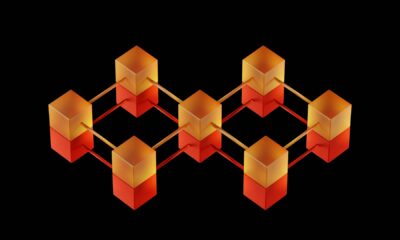Business
Why 401(k) is important in your retirement savings
Having a 401(k) plan can help you ensure you have a healthy financial status during your retirement years.

Earlier, private sector employees were depending on their employers to provide them defined pension benefits. In the 1980s, a good 60 percent of employees were entitled to receive pension benefits from their employers, but in 2017 the number dropped to only 4 percent. With the conventional pension schemes quickly fading, the pressure is now on the 401(k) plan to help you sail through your retirement.
How much you need to save to maintain your current lifestyle in retirement
To maintain the lifestyle, you are enjoying today in your retirement, it is important that you have 70 percent to 90 percent of your current income saved for retirement. Most employees have IRA accounts and savings put aside for their retirement, but most of the income is likely to come from social security. If you take your fund from social security at your full retirement age, you are likely to get about 40 percent of your income. The rest of the income required can come from your well-maintained 401(k). However, you need to ensure that your 401(k) account is purely used for retirement only. Try to avoid withdrawing small amounts from your 401(k) plan as it can create an imbalance in your financial health at retirement.
Importance of a 401(k) Plan
1. Matching contributions
If your employer offers a matching contribution to your 401(k) plan, that’s easy and free money. Some employers offer 50 percent of your first 6 percent contribution towards your 401(k) plan. For example, let’s assume that you earn $50,000.
• Your contribution is 6 percent of your income = $3,000
• If your employer offers dollar-to-dollar match = $3,000
• If your employer contributes 50 percent of your 6 percent = $1500
Moreover, your employer’s contribution to your 401(k) plan doesn’t count towards your annual contribution limit. Hence, you have all the money to gain and nothing to lose.
2. Lifetime contributions
Once you turn 70 1/2 years of age, you can no longer make a contribution towards any of your retirement accounts, including traditional IRAs even if you are still working. April after you turn 70 1/2, you have to start withdrawing small amounts, which are called Required Minimum Distributions (RMDs) from your retirement accounts.
As soon as you start taking RMDs, it is considered normal income and could propel you to higher tax rates. A 401(k) plan works differently v.s. an ira. As long as you are still working, you can contribute to a 401(k) plan and as long as you own less than 5 percent of the business that employs you, you are not required to take RMDs from your employer.
3. Protection from creditors
A 401(k) plan is an ERISA-qualified retirement account. This means that it is set up under the Employee Retirement Income Security Act. Therefore, a 401(k) plan provides creditor protection.
Having a 401(k) plan also offers some protection from federal tax liens too. Since 401(k) legally belongs to your employer, IRS cannot place a lien on your account.

401(k) participants have the option to contribute traditional (before tax) dollars or Roth (after tax) dollars or any combination. (Photo by DepositPhotos)
4. Roth 401(k) option
Since 2006, when the rules were changed, 401(k) participants have the option to contribute traditional (before tax) dollars or Roth (after tax) dollars or any combination thereof. In addition, the plan participant has the power to a Roth conversion inside the plan. In either case the Traditional dollars and the Roth dollars will be in separate sub accounts all within the same plan.
By using Roth contributions and/or Roth conversions there are tax advantages to the participants. With a Roth contribution, your contributions are taxable at today’s tax rate, BUT your withdrawals in retirement are completely tax-free. This plan works best for people who would be in a higher tax bracket in their retirement. Roth 401(k) contribution limit is similar to a traditional 401(k) plan.
| Year | Contribution Limit |
| 2019 | Up to $19,000 (for 50 years and above catch-up contribution limit is of $6,000) |
Traditional and/or Roth IRAs have income limits. You are allowed able to make a contribution towards a Roth IRA if your income is below a certain amount.
However, there are no income limitations affecting 401 k contributions. If you fall in the bracket of high earners, Roth 401(k) is the ideal retirement plan for you. This a huge difference between IRA’s and allows high income people to enter the Roth world. It is the best of both worlds, no income limitations and much higher contribution limits.
5. Backup retirement plan
Even if you have a lot of retirement savings plans to finance your retirement, it is advisable to have a 401(k) plan as a backup plan. From now until your retirement, a lot of things can happen. You may lose your job, you may go out of business or your health could make it impossible for you to work. These scenarios can adversely affect your quality of life in retirement. To make sure that you have a good life post your retirement, putting away some portion of your income into a 401(k) plan makes sense. With a well-financed 401(k) account, you are prepared to face the challenges of a retired life without compromising on the standard of your living.
Why your 401(k) matters – final words
If you want to sustain the lifestyle you have outlined for yourself in your retirement, you need to save aggressively. A 401(k) is a more efficient tool to save for retirement than a traditional IRA. Whether it is an individual retirement account or an employer-sponsored saving plan, the key to having a good retirement saving plan is to save consistently. Create a budget, calculate the percentage of salary you should be putting aside for retirement each month and stick to your budget.
(Featured image by DepositPhotos)
—
DISCLAIMER: This article expresses my own ideas and opinions. Any information I have shared are from sources that I believe to be reliable and accurate. I did not receive any financial compensation for writing this post, nor do I own any shares in any company I’ve mentioned. I encourage any reader to do their own diligent research first before making any investment decisions.

-

 Africa2 weeks ago
Africa2 weeks agoCôte d’Ivoire Unveils Ambitious Plan to Triple Oil Output and Double Gas Production by 2030
-

 Business1 week ago
Business1 week agoThe TopRanked.io Weekly Digest: What’s Hot in Affiliate Marketing [NordVPN Affiliate Program Review]
-

 Cannabis3 days ago
Cannabis3 days agoCannabis Company Adopts Dogecoin for Treasury Innovation
-

 Biotech1 week ago
Biotech1 week agoPfizer Spain Highlights Innovation and Impact in 2024 Report Amid Key Anniversaries

























You must be logged in to post a comment Login